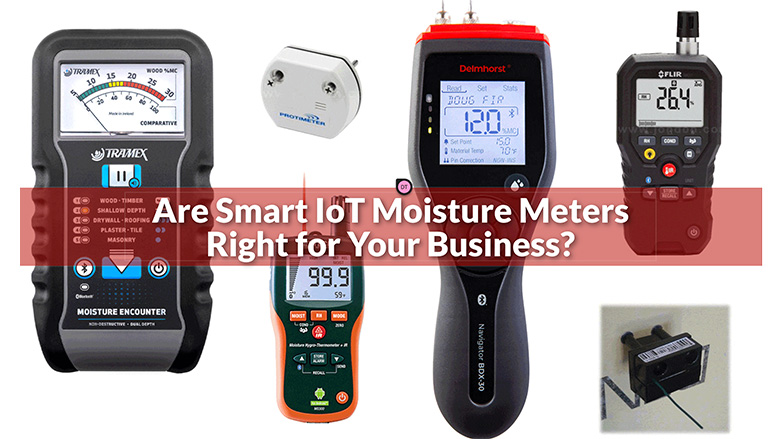The water damage restoration industry is changing rapidly, and moisture meters are no exception. In this article, I will focus on the changes in smart technology which are making it easier to take moisture readings and provide valuable information to contractors in real-time about their jobs.
In the past, contractors brought their moisture meters to the job site and collected readings only when they were on site. New technologies are allowing for meters to stay on the job site, take readings more frequently and allow the contractor to access these readings remotely. Many companies, such as Protimeter, Delmhorst, Phoenix, Extech, Tramex, Flir and others, offer Bluetooth data connections that make it easy to retrieve the data from the meter. Other companies, such as OmniSense, use Wi-Fi to connect to meters.
Here are some of the benefits these new meters can bring to your company:
- Data logging of readings while you are not at the job site
- More readings per day allowing you to track progress
- Quickly take readings using your smartphone
- Readings go directly to the drying report
- Allow you to see current readings at the job site remotely and receive alerts when dry
- Provide last-known location of your meter to help reduce lost equipment
Key Aspects to Know Before Investing in Smart Equipment
When considering investing in smart moisture meters, you will first want to understand what to look for in your meter based on the results you are hoping to achieve. For data logging, make sure that your meter has onboard memory and understand how many readings your meter can hold before it will overwrite data. When considering your readings, you will need to think about what you are trying to do with them.
Are you okay with getting the reading in one app and then typing them into your mitigation software? If not, make sure that your meter can transmit data to your software. Bluetooth is nice as any phone with an app can easily connect without needing to be on the same network. With Wi-Fi systems, you will need to have your meter on a Wi-Fi network and then have your smartphone on that same network.
Second, if you want to see and take readings remotely and receive alerts when the material is dry, make sure the meter you purchase has a way to do remote monitoring of your job site. Last, if you want to have some built-in asset tracking, make sure your meter keeps track of the last known location by tying the meter to the GPS coordinates of the phone when the phone connects to the meter. One shortcoming of a leave-behind meter to keep in mind is that it is only reading moisture at one point.
Smart Equipment – the Foundation of Smart restoring
The rapidly expanding capabilities and adoption of smart equipment over the past several years have been nothing short of breathtaking. Gain your competitive edge over others in the restoration industry by becoming an early adopter of the technology now and expand your opportunities while increasing operational efficiencies.

